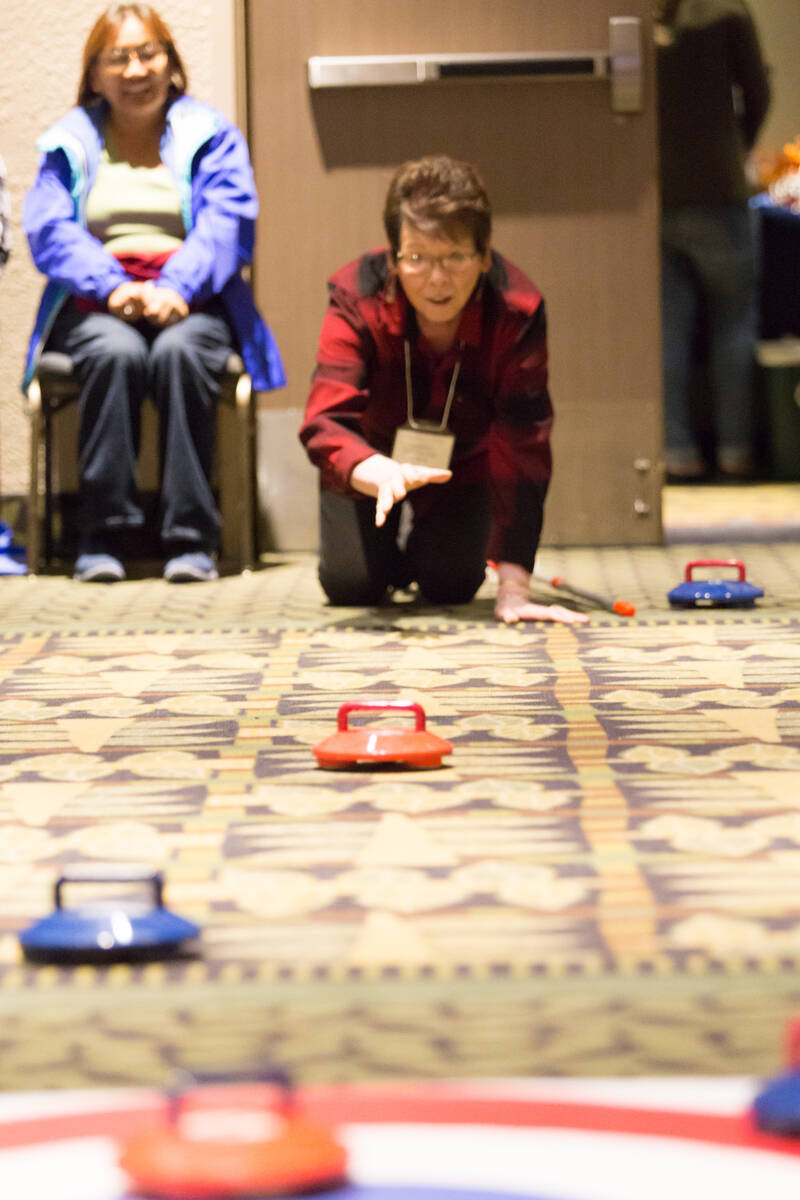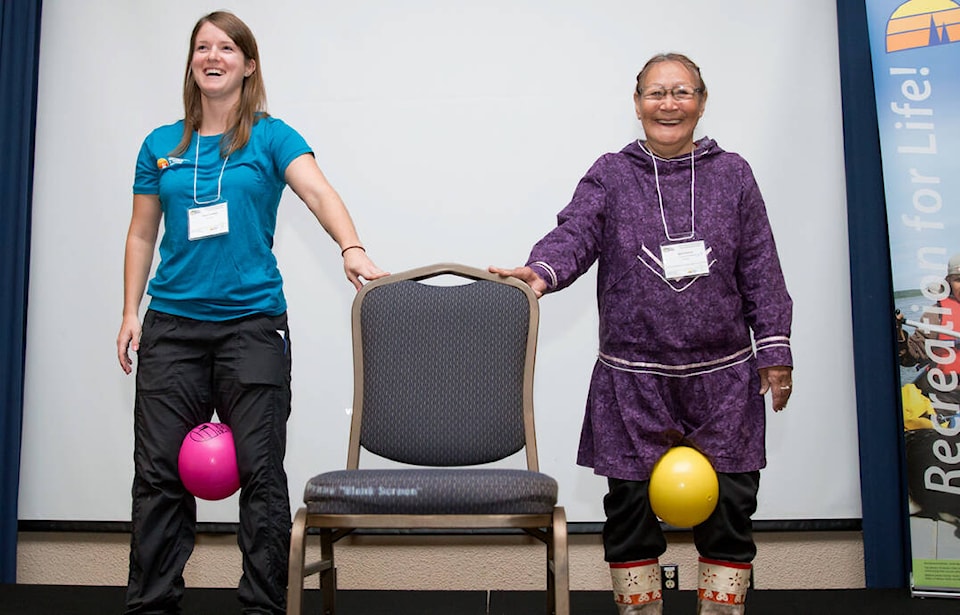Just as the familiar proverb says, a rolling stone gathers no moss, likewise, physical activity can help seniors and elders stay limber and maintain their quality of life as they get older.
The NWT Recreation and Parks Association recognizes there is an important connection between exercise and good health, said Nuka de Jocas, the director of active communities for the association.
And de Jocas said one way to ensure people maintain a healthy, active lifestyle and remain mobile is to partake in regular fitness opportunities, like the Elders in Motion programs offer.
“In a general sense, the intent of Elders in Motion was to help a growing population living in the North. It is adapted to the North,” he said of the overall program that facilitates training with community leaders, community health representatives, recreation staff and others who will then deliver programs to community members based on their needs and preferences.

Elders in Motion programming encompasses Active Living Exercise, Fitness for Falls prevention, Balls and Balance, Gaining Strength in Long Term Care and Intergenerational Programming workshops, he said.
Each of those programs are designed with specific goals in mind, he added.
For example, he said the active living exercise program provides exercises that elders can do in groups or at home.
“It is a popular program and Includes simple, yet progressive exercises for aging adults.”
In the two-day training session for the Fitness for Falls prevention workshop, de Jocas said community leaders design a fitness program suited to the specific needs of the elders within the community.
“That training focuses on increasing mobility and making sure elders diminish the risk of falling.”
Elders themselves will also participate in some of the training programs being offered in smaller communities throughout the year, he noted.
“There are a lot of people isolated in the winter months here.”
“This is a way for us to bring people together and to break the isolation that elders go through often,” he said of the social component of the training and the delivery aspect of the program.
But that said, de Jocas said they do not define elders as being part of a specific category.
“There is no age group. That is for everyone to decide whether they feel comfortable in participating.”
De Jocas said that in many Indigenous communities, elders have traditionally lived very active lifestyles throughout their entire lives - going out on the land to hunt, fish, trap or live for periods of time.
That way of life becomes a consideration then, when developing appropriate exercise programs when they are unable to do so any longer.
“We try to combine exercises that reflect that kind of lifestyle,” he said.
“There was a very popular yoga program called Tlicho Camp yoga based on movements that were on the land movements, such as sawing wood. We considered what movements or hand motions you could do that simulate sawing, or those for fishing,” he said, adding that the program is available to watch on the Association’s website and YouTube channel.
To keep the Elders in Motion program relevant for trainers and participants, de Jocas said an Elders in Motion annual conference is held and is an event that not only shares information and training, but also one that celebrates and recognizes elders and their caregivers.
“It’s a very popular event. Last year it was held in October as it will be this year,” he said.
Also during the conference, an awards ceremony is held during which time an Active Elder Award is presented to “honour inspirational Elders who continue to be active, do traditional activitiesmand who are role models in their community.”
And what do elders themselves say of the program that keeps them on their toes, both physically and mentally?
De Jocas said they receive a great deal of positive feedback.
“It creates an opportunity for folks to come and be together. It’s fun. They really enjoy it and it’s another reason to get out and see each other,” he said
“It brings back an active way of living and a better understanding how physical literacy will help you later on as you progress in age. It really contributes to the overall health of our communities. It is always good to hear stories from the elders and it is always such a pleasure.”
